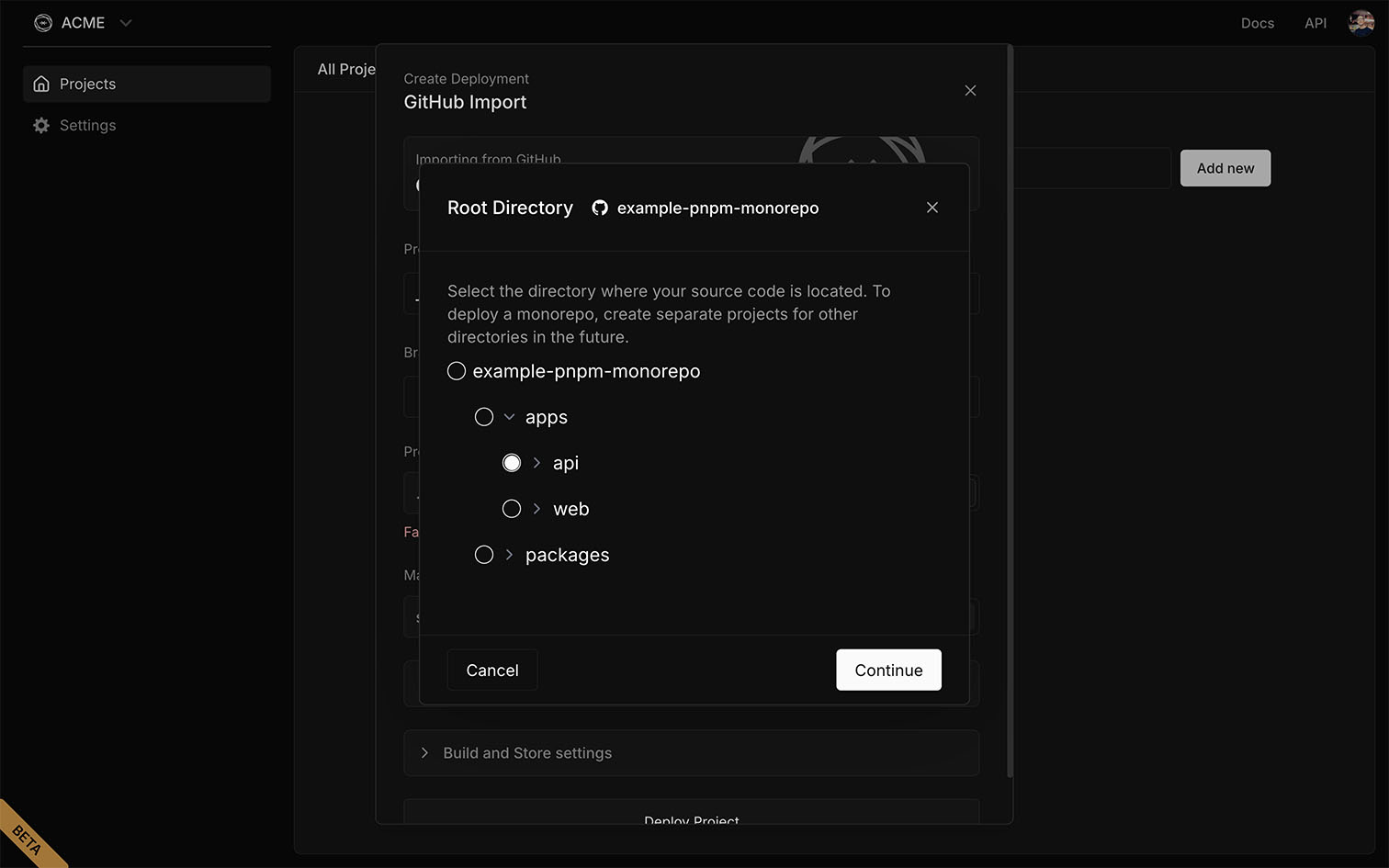Monorepo Deployment
Deploying Mastra in a monorepo follows the same approach as deploying a standalone application. While some Cloud or Serverless Platform providers may introduce extra requirements, the core setup is the same.
Example monorepoDirect link to Example monorepo
In this example, the Mastra application is located at apps/api.
apps/
├── api/
│ ├── src/
│ │ └── mastra/
│ │ ├── agents/
│ │ ├── tools/
│ │ ├── workflows/
│ │ └── index.ts
│ ├── package.json
│ └── tsconfig.json
└── web/
packages/
├── ui/
└── utils/
package.json
Environment variablesDirect link to Environment variables
Environment variables like OPENAI_API_KEY should be stored in an .env file at the root of the Mastra application (apps/api), for example:
api/
├── src/
│ └── mastra/
├── .env
├── package.json
└── tsconfig.json
Deployment configurationDirect link to Deployment configuration
The image below shows how to select apps/api as the project root when deploying to Mastra Cloud. While the interface may differ between providers, the configuration remains the same.

Dependency managementDirect link to Dependency management
In a monorepo, keep dependencies consistent to avoid version conflicts and build errors.
- Use a single lockfile at the project root so all packages resolve the same versions.
- Align versions of shared libraries (like Mastra or frameworks) to prevent duplicates.
Deployment pitfallsDirect link to Deployment pitfalls
Common issues to watch for when deploying Mastra in a monorepo:
- Wrong project root: make sure the correct package (e.g.
apps/api) is selected as the deploy target.
Bundler optionsDirect link to Bundler options
Use transpilePackages to compile TypeScript workspace packages or libraries. List package names exactly as they appear in each package.json. Use externals to exclude dependencies resolved at runtime, and sourcemap to emit readable stack traces.
import { Mastra } from "@mastra/core/mastra";
export const mastra = new Mastra({
// ...
bundler: {
transpilePackages: ["utils"],
externals: ["ui"],
sourcemap: true,
},
});
See Mastra Class for more configuration options.
Supported monoreposDirect link to Supported monorepos
Mastra works with:
- npm workspaces
- pnpm workspaces
- Yarn workspaces
- Turborepo
Known limitations:
- Bun workspaces — partial support; known issues
- Nx — You can use Nx's supported dependency strategies but you need to have
package.jsonfiles inside your workspace packages
If you are experiencing issues with monorepos see our: Monorepos Support mega issue.